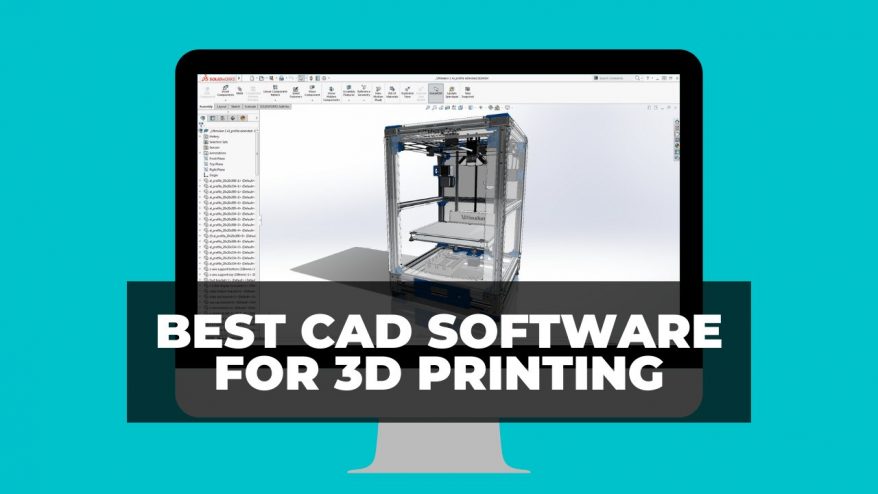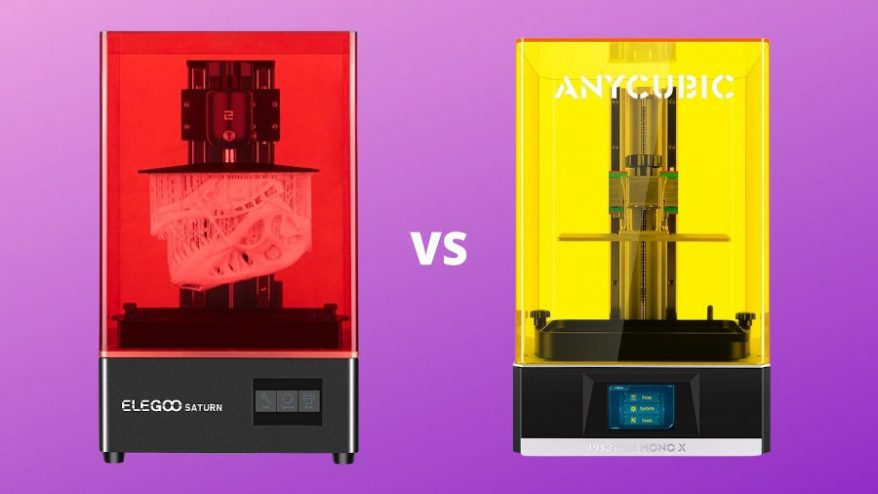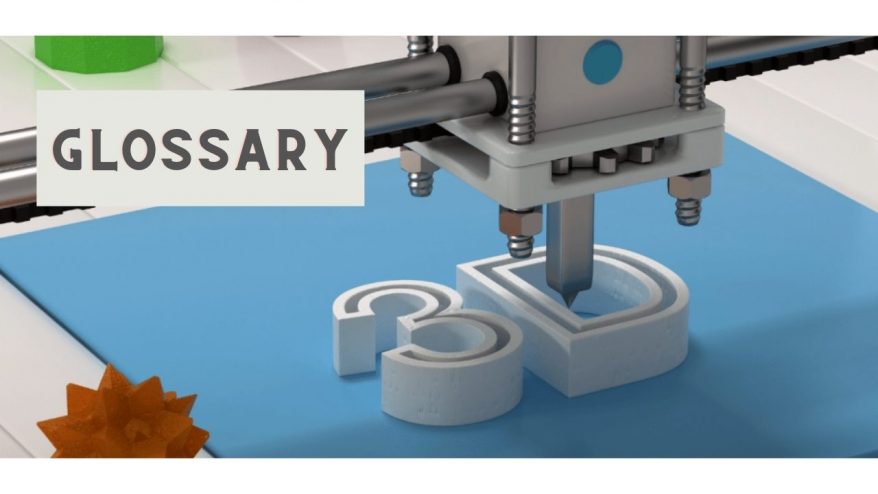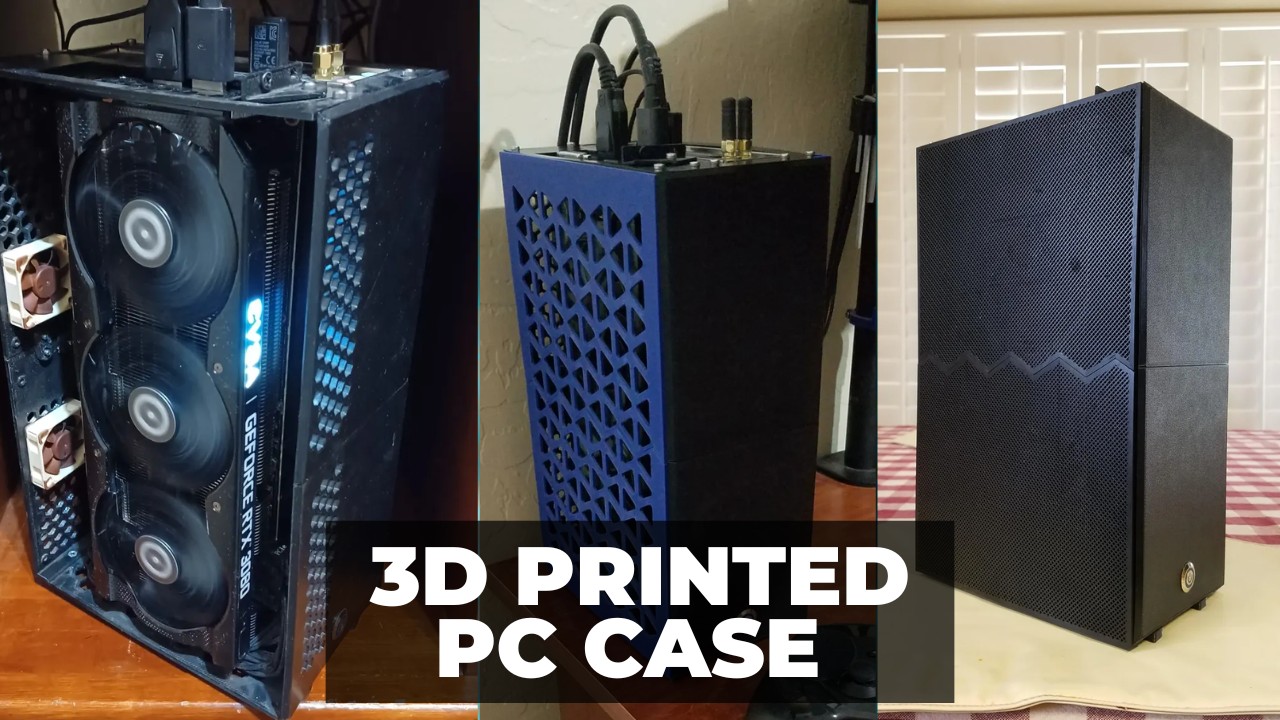
11 3D Printed PC Cases You Can Make At Home (2023)


At 3DSourced we’ve covered everything 3D printing and 3D since 2017. Our team has interviewed the most innovative 3D printing experts, tested and reviewed more than 20 of the most popular 3D printers and 3D scanners to give our honest recommendations, and written more than 500 3D printing guides over the last 5 years.
These days just about any electronics store will offer custom-built PCs for the more discerning and knowledgeable consumer. This includes both functional and aesthetic parts, because if you’re going to be spending a lot of time on and around your PC, you’re going to want it to look exactly the way you want.
Of course, these custom parts aren’t cheap, even the low-tech ones.
For this, 3D printed PC cases cut costs, while giving you full control over how your PC looks.
Here we’re going to look at some custom 3D printed computer cases for all PC types and purposes, from the functionally useful to the outright cool.
Why 3D Print Your Own PC Case?
As well as being a cost-effective way to complete your custom PC, 3D printing your own computer case is a fantastic way to personalize your machine beyond the standard stickers and decals that adorn many a PC and laptop the world over.
By 3D printing your own PC case, you can be specific with the color and shape, as well as additional functional features like mounts or ports for future planned upgrades. You can make spaces for extra fans, water cooling reservoirs, or inner mounts for additional motherboards and RAM should you need it.
3D printing makes these additions quick and easy, and by saving your finished model as an STL file, you can keep it handy for further modification or upgrades further down the line.
3D printed PC cases can also be made for ATX motherboards and Raspberry Pis, some of which we’ll look at here today.
So without further ado, here are some of the best 3D printed computer and PC cases you can check out today. Be sure to bookmark your favorites if you’re still in the process of building your PC!
Wall-Mounted PC Cases
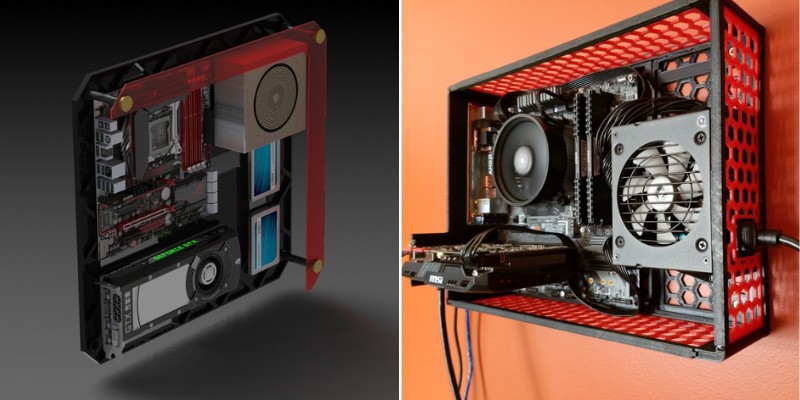
Offices, home or otherwise, become cluttered very quickly. With wires running everywhere and papers piling up, it’s easy for a chunky block like a PC to feel like it’s taking up too much space.
This 3D printed wall-mounted PC case is the perfect solution to these woes, and it looks pretty cool to boot. Wall-mounted PCs aren’t just awesome to see, but they also make maintenance and cable switching easier by keeping your PC higher up for hassle-free access.
It will require some thorough cutting, which is easier with a CNC router. So it’s better if you have access to one for easier building.
You can also check out this dual slot 3D printed ATX case that’s an easier print and fit and looks awesome when mounted to the wall. It may look complicated, but fear not, the link includes detailed instructions and tips for printing, post-processing, maintenance, and maximized safety to keep your PC mounted well and working smoothly.
Open ATX Case
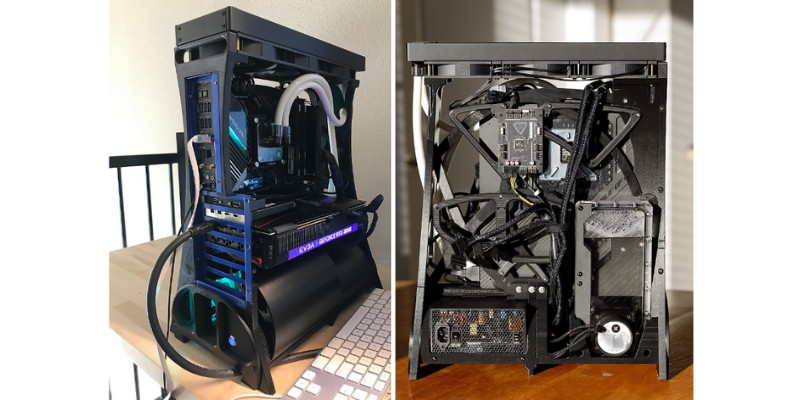
Speaking of 3D printed ATX cases, those of you used to more demanding programs like graphically impressive videogames or high-profile streaming software will know full well that efficient cooling is imperative to smooth performance.
This open-frame ATX case is a 3D printable computer part that leaves plenty of space for air circulation and/or a water-cooling system.
It may seem a little reductive to use 3D printing to make a PC case that prioritizes space over anything else, but those of you used to water cooling will know that a larger reservoir is necessary for maximum efficiency.
It may not be the most attractive 3D printed PC case on this list (or indeed at all) but it’s a practical solution for those of you who need a quick and inexpensive solution to overheating.
Vintage Computer Case
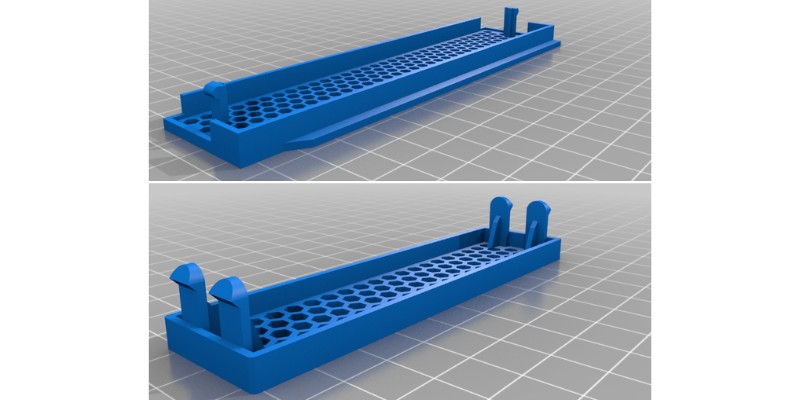
They say that they sure don’t make them like they used to, but in the case of PCs, this is normally seen as a good thing. Still, there are those who love the retro look or simply still use perfectly functioning PCs from several generations ago.
These PCs weren’t quite as diverse as the ones we see these days and followed a fairly uniform look with USB slots, DVD trays, and even floppy disc drives if they’re old enough!
But of course, even machines that were built to last age and wear over time, which led one designer to come up with this 3D printed vintage computer case, compatible with old technology or modifiable to fit a retro mask on modern machines.
So whether you’re old enough to feel nostalgic for how PCs looked in the age of Windows Vista, or are simply a fan of the retro aesthetic, it’s easy to step into the past with this 3D printed computer case from days not yet forgotten.
PC Fan Adapter
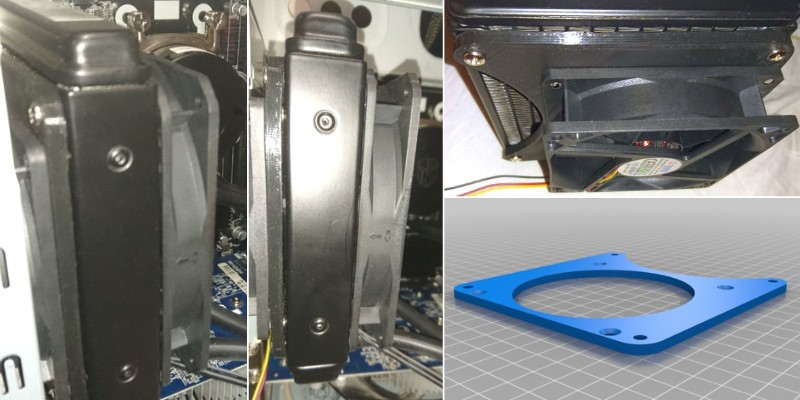
Efficient cooling is an important process for any PC or laptop, regardless of how heavily they’re used. It’s important to maximize the effectiveness of your fan, which this 3D printed PC case adapter does quite nicely.
Working as an add-on for any fan-cooled computer, it makes use of short-form liquid cooling as well to make sure your computer is vented well with cold air. It’s a simple fix that increases the lifespan and performance of just about any PC, and works very well on gaming PCs or any computer that needs to deal with demanding software.
The standard design is made to fit any 120mm fan or attach to an ATX 92mm. But you can change the dimensions in your preferred software to match whatever size fan your PC uses. You will need to screw this addition on, so be sure your PC fan is situated somewhere where this add-on will go on without damaging any inner workings.
Vertical Gaming PC Case
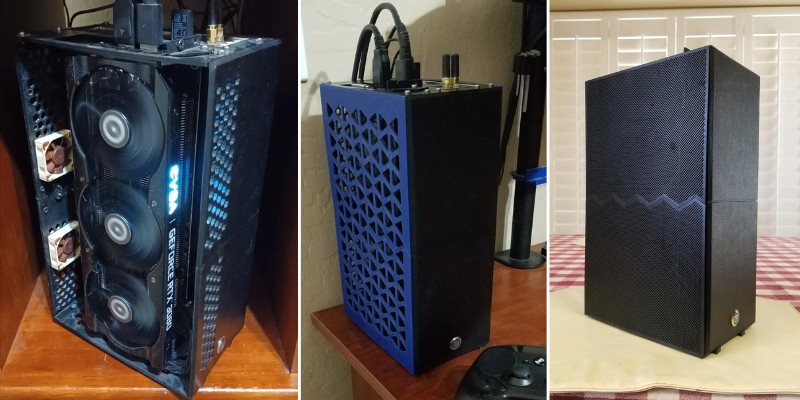
Gaming PCs in particular need to sport high performance without slowing down due to overheating. This is especially true for streamers who need to use demanding software and strong internet connections concurrently with potentially graphically intense games.
This 3D printed PC case is designed for such gamers, with ideal space for fan cooling and enough leftover for water cooling should you need it. The vertical design helps keep hotter-running parts to the top where they won’t affect other parts and reduce performance quality.
Keep in mind that this is one of the more expensive computer cases on this list, with the various parts and filament amount needed totaling around $70. But while not much cheaper than the ~$80 professionally made models, the STL file is open for further customization at your own discretion, making it the better choice if you don’t mind a little DIY.
Micro ATX Cases
Don’t think we’re done with ATX just yet. 3D printed Micro ATX cases come in a variety of forms, all of which are useful for protecting and even improving the performance of the motherboards.
Here are some cool examples of 3D printed micro ATX cases for different uses and tastes.
Mountable Micro ATX Case
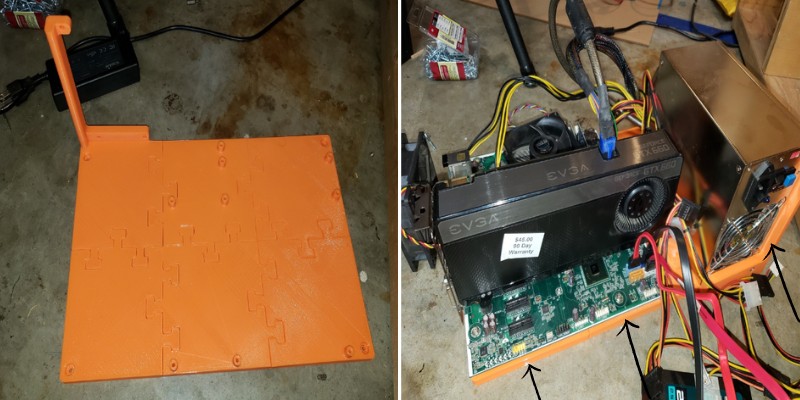
This 3D printed Micro ATX case is mountable in two senses. It’s fit for any Micro ATX motherboard to be mounted onto it, and is also designed with holes for four screws so it can be mounted anywhere you like.
While your office wall is an obvious choice, you can also save on space by mounting it under or to the side of your desk. Just be sure you keep it away from anywhere your legs are likely to knock to avoid having it crash down to the floor.
This mounting will keep your Micro ATX from moving around or getting in the way while you’re setting it up or testing it out, and will make sure it stays safe and sound away from any pets or little ones in your life who are likely to see it as a toy.
While it is designed to be printed in PLA, it may be worth considering a stronger filament to make sure your motherboard is kept safe and sound, especially if you plan on mounting it to a wall.
Micro ATX Power Supply Case
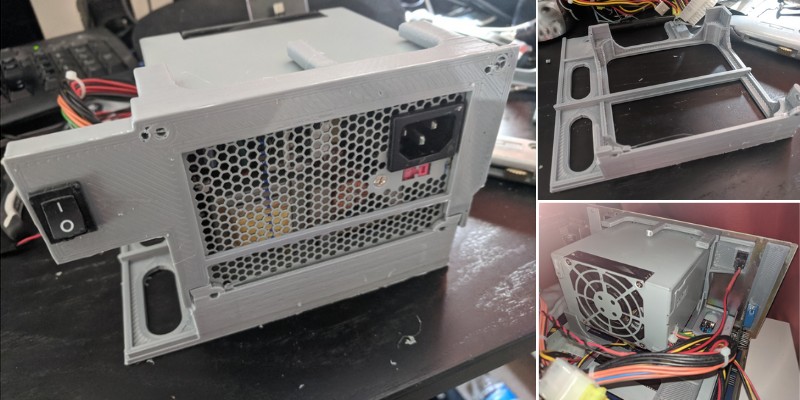
This design was made as a support for the Amiga 2000’s power supply, keeping it safe from dust and debris without obstructing any necessary cooling mechanisms.
It needs to be printed as two separate parts, but is designed to fit together without glue. There are also lined-up guide holes so you can screw them together if you like.
Included in the link above is a set of instructions for 3D printing this case as efficiently as possible so you won’t need to worry about rafts or supports as long as you follow the creator’s guide.
Mini PC Case
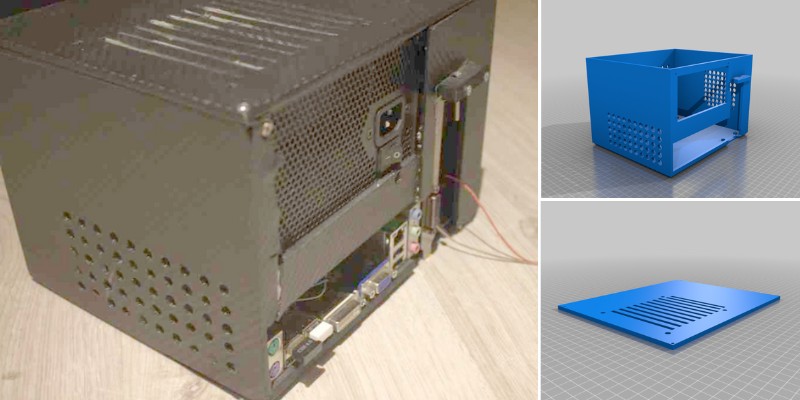
There’s something about tiny versions of things that are fun to look at and use, made evident by this micro ATX case designed to look just like a miniature classic PC.
It’s designed for motherboards absolutely no larger than a micro ATX, but there’s no reason you can’t change the dimensions yourself to suit something larger if you like.
Over time, the creator has made modifications to this mini PC case, adding an extra cooling fan port for added efficiency as well as enough space for additional RAM. Of course, you can feel free to make your own changes to the design as you see fit.
3D Printed PC Cases for Raspberry Pis
Raspberry Pis are impressive little PCs that need their own cases and setups just like any modern-day electronic device. Because of this, there are quite a few 3D printed computer cases designed to work for different kinds of Raspberry Pi.
Once you’ve picked our favorite of the 3D printed Raspberry Pi PC cases below, why not also check out our article on the best Raspberry Pi projects to break it in?
Retro Tower Desktop Case
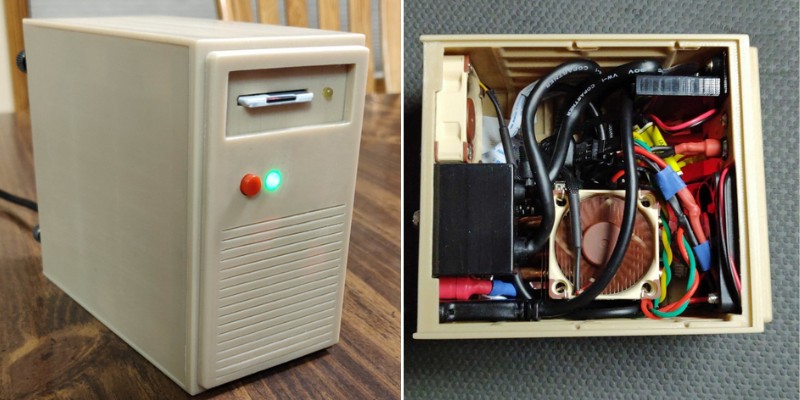
Once again I feel compelled to point out how awesome tiny versions of things can be. This retro style tower PC case for the Raspberry Pi 4 is a fantastic miniature computer that you can equip with SD card slots, USB connectors, and even LEDs to make it look like a genuine old-school PC that’s just been shrunk down!
The real creativity of this design shines in the fact that even the old-school layout isn’t purely aesthetic. The SD card slots are where the floppy disc port would have been on the real thing, for example, and the HDMI ports are in place of what would once have been a SCART connector.
You will need a few screws, a little wiring work, and some careful construction to get this mini PC looking as it does in the link above, and the instructions for how to do so are laid out clearly. The tiny PC aesthetic makes the elbow grease worth it, though, and it’s pretty fun to use.
Screwless Raspberry Pi Case
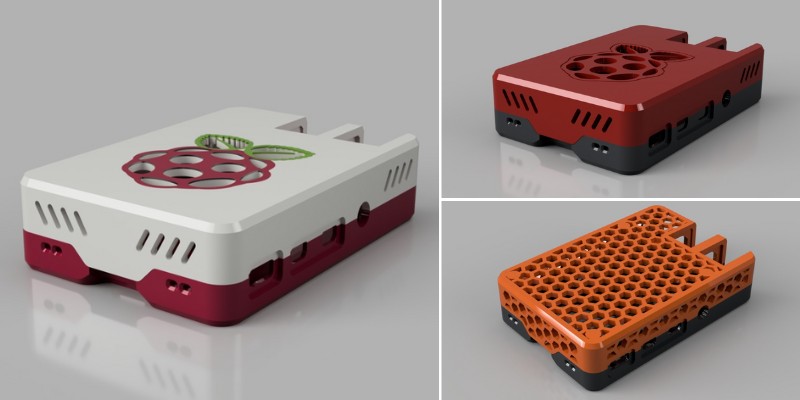
If you’re tired of dealing with small screws, or simply don’t have the hands for intricate pieces that need to fit together, then this screwless Raspberry Pi case and stands is the perfect print for you.
The parts are designed to fit together and stay that way, provided you ensure the dimensions are all correct.
It’s a simple design that fits the Raspberry Pi 3 like a glove, removing the need for you to measure out and design such a case yourself by already including the appropriate holes for all necessary cable inputs.
What I really like about this design is that its already made with holes on top that not only aid cooling, but are also in the shape of the Raspberry Pi logo. It looks cool and really shows off the tech. And because this PC case needs to be printed in two parts, you can print them in any two colors you like!
The link above even includes a few different color combinations for you to look at if you decide on something other than the standard red and white.
Gaming Rig Style Case
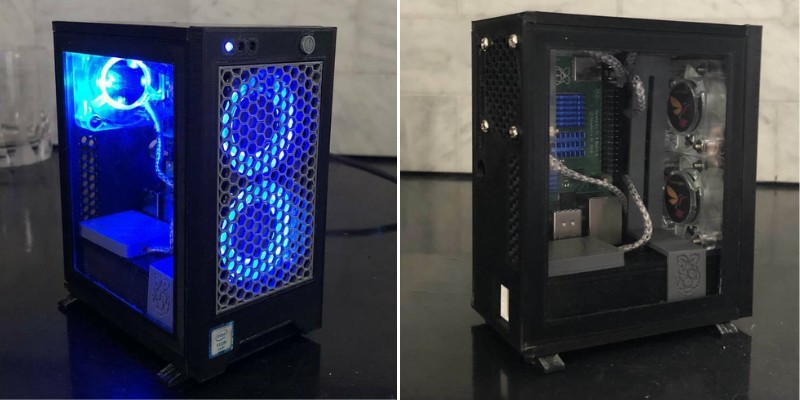
Another 3D printed computer case for the Raspberry Pi 4 is this excellent model made to look like a gaming rig, much like the vertical case we’ve already seen.
As well as acting as a working, fan-efficient PC case, the files also include feet for the base that are retractable and rotatable. If you’d rather they stay put, you can also print the non-retractable versions included.
It’s also designed to be windowed for more aesthetic appeal, and you can use LEDs to give it that cool glow common in top-of-the-line gaming PCs.
All in all, this is a highly customizable mini gaming PC perfect for any Raspberry Pi user who wants a cool look for their desktop.
Hints and Tips
Building your own PC takes a lot of care and patience to make sure you get exactly the right parts you need. If you underestimate your needs, you’ll end up with poor performance. Overestimate, and you risk spending far too much money and effort on something you don’t actually need.
Your PC case is no different. So here are a few hints and tips to make sure you get the most out of your computer case as possible.
Double Check Your Measurements
Chances are you’re 3D printing a PC case for a computer you already have or at least plan to own. Making sure this case fits correctly is important, so be sure to double-check all measurements to make sure it fits exactly right.
This will not only prevent your case from falling off/apart, but will also make it look more streamlined too!
Use Heat-Resistant Filament
Even with a good cooling system, PC parts will run hot if with constant and demanding use. If you’re planning on using particularly heavy software that will push your device’s capabilities, be sure to use a more heat-resistant filament like PETG or ABS to make sure your 3D printed case stays firm and intact.
Leave Enough Space for Cooling

It may be tempting to make a compact and sleek design for a better look, but don’t be fooled, your PC case needs to have enough space for the parts to ‘breathe’ as it were.
Ensuring there are enough air holes and spots for fans and/or cooling tubes will help greatly with reliable performance and long-lasting parts, not to mention make room for extra additions like external hard drives and RAM upgrades.
Save Your Files
Whether you’re designing your PC case yourself, using one of the designs in this list, or modifying existing designs to suit your needs, be sure to keep the finished STL file safe.
This not only allows you to correct any mistakes in printing, but also leaves it available for future upgrades should you need to add anything else going forward like an extra cooling fan or additional USB ports.
Technology is an ever-evolving monster, so keeping your files safe for another day will help you make any necessary changes down the line without having to start from scratch.
Related articles:
- DIY Laptop Stand: A Rundown Of The Best 3D Printed Laptop Stands
- The Best 3D Printed Computer Accessories You Can Download
- 3D Printed Board Games: Print Something New For Game Night
- 3D Printed Anime Figures & Where To Find Them (With Links To FREE Files)
- Here Is A Roundup Of 3D Printed Phone Stands & Links
- 3D Printed Phone Cases You Can Print at Home (Free & Paid Options)
- 3D Printed Dragons – We Rounded Up The Best Models You Can Print At Home
- 3D Printed Orthotics: 3 Most Exciting 3D Printed Medical Projects












